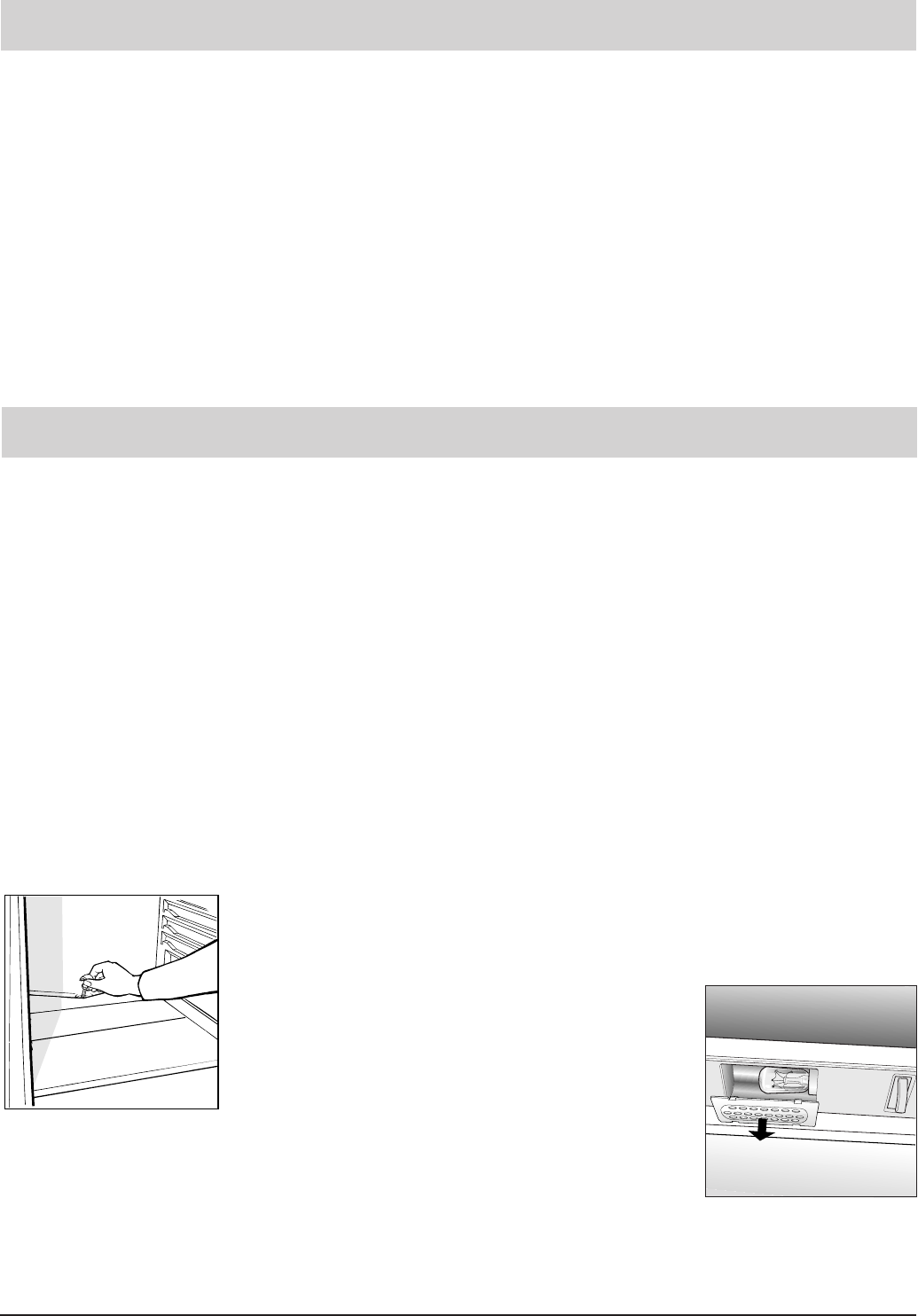
7
ENERGY SAVING TIPS
- Install the Appliance Properly
In other words, away from sources of heat and direct sunlight, in
a well ventilated room.
- Correct Temperature Settings
Set the temperature control to one of the middle settings. Very
cold temperature settings will not only consume a great deal of
energy but will neither improve nor lengthen the storage life of
the food. Excessively cold temperatures may ruin vegetables and
cheese.
- Do not Overfill your Appliance
Remember that proper storage of food requires good air circula-
tion. Overfilling your appliance will hamper proper air circulation
and overwork the compressor.
- Close the Door
Open your refrigerator only when necessary, remember that every
time you open the door, most of the cold air will be lost. To bring
the temperature back to the proper level again, the motor must
run for a considerable amount of time, consuming a substantial
amount of energy.
- Check the Door Seal
Keep the seal clean and make sure that it adhere well to the door.
This alone will ensure that no cold air escapes.
- No Hot Foods
A container of hot food placed in the refrigerator will increase the
temperature significantly.
Allow food to cool before storing.
Cleaning and Special Maintenance
Before cleaning the refrigerator, switch off and remove
the plug from the socket.
- Your appliance is manufactured with hygienic, odourless
materials. To preserve these characteristics, always use sealed
containers to store foods, in order to prevent spills which
could stain and cause unpleasant, difficult to remove odours.
- Use a water and bicarbonate solution to clean the appli-
ance. Clean the interior and exterior with a sponge soaked
in warm water and a sodium bicarbonate solution, which is,
among other things, a good disinfectant. If you do not have
any in the house, you can use a neutral soap.
- DO NOT use abrasive detergents, bleach or deterents con-
taining ammonia. NEVER use solvent based products.
- All removable parts should be taken out and soaked in
warm soapy water or detergent. Rinse and dry them thor-
oughly before putting them back in the appliance.
- When the appliance is not used for a long time, remember
to clean the interior and dry thoroughly, leave the doors open
to prevent the formation of mould and unpleasant odors.
- Replacing the light bulb. Switch off and remove plug from
the mains socket before replacing the bulb
Remove the light cover and
unscrew the bulb and replace
it with a new one, with
wattage no higher than 10
watts. See fig 5.
CARING FOR YOUR APPLIANCE
Before doing any cleaning, disconnect the appliance
from the electricity (by pulling out the plug or turning
off the general switch in your home).
Defrosting
WARNING: do not damage the refrigeration circuit.
Do not use mechanical devices or instruments other
than those recommended by the manufacturer to speed
up the defrosting process.
How to Defrost the Refrigerator
This appliance defrosts automatically and the water is chan-
nelled to the back toward the drain installed for this purpose
(fig. 4). Here, the heat produced by the compressor will make
it evaporate. The only thing you must do is to periodically
check and clean the hole of the drain, which is located be-
hind the fruit and vegetable crisper, so that the water drains
properly.
Fig. 5
Fig. 4














